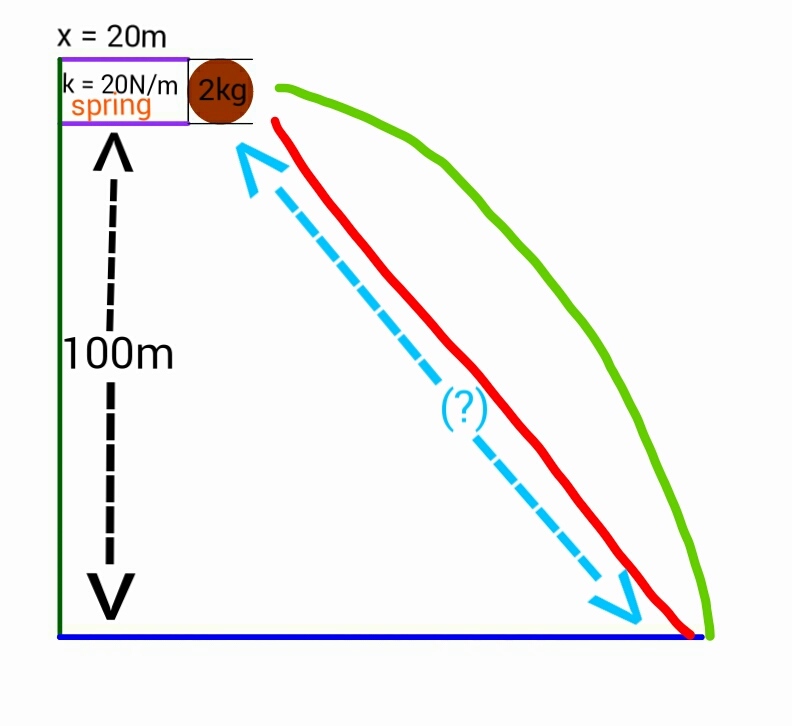Horizontal pinball

A ball of mass is placed in front of a spring having constant and compression at a height of above the ground.
Now, the spring is released, giving the ball a horizontal velocity.
Find the total displacement (in meters) of the ball from the spring when it hits the ground.
Details and Assumptions:
- The ball does not rebound after hitting the ground first.
- Air friction is negligible.
- The spring is 100% efficient.
- Take as the acceleration due to gravity.
The answer is 300.
This section requires Javascript.
You are seeing this because something didn't load right. We suggest you, (a) try
refreshing the page, (b) enabling javascript if it is disabled on your browser and,
finally, (c)
loading the
non-javascript version of this page
. We're sorry about the hassle.
The energy given by the spring can be found out by 2 1 kx 2 = 2 1 × 2 0 × 4 0 0 = 4 0 0 0 J
Now, this energy converts into kinetic energy of the ball which is given by 2 1 mv 2 .
⟹ 4 0 0 0 = 2 1 × 2 × v 2 v = 4 0 0 0
We proceed to find out the horizontal range of this projectile which is given by v g 2h = 4 0 0 0 1 0 2 × 1 0 0 = 8 0 0 0 0
So, the displacement can be found by using the Pythagoras' theorem which is the hyptoenuse in the right angled triangle having its legs as the horizontal range of the projectile and the initial height of the ball.
∴ Displacement = ( 1 0 0 ) 2 + ( 8 0 0 0 0 ) 2 = 9 0 0 0 0 = 3 0 0 m